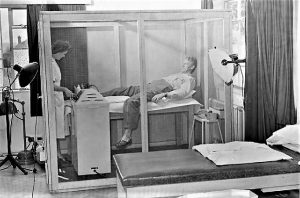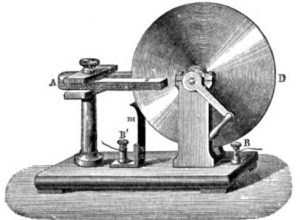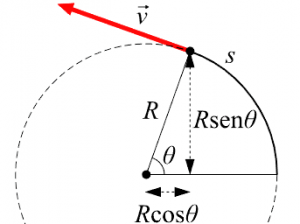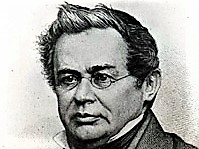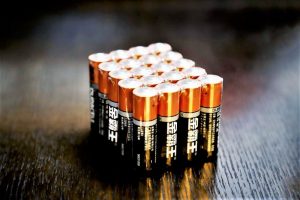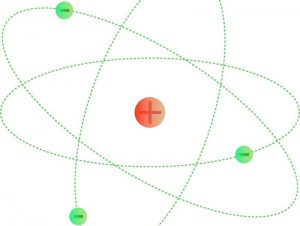Faraday cage
When an electrical charge accumulates outside a metal box, the electrons in the metal that makes it up, move to cancel any charge that is on the inside. This is precisely what Michael Faraday discovered with Faraday cage, that an electric charge can never be transferred to the inside of a metal box or covered with an electric mesh.
What is Faraday's cage?
The Faraday cage, made in 1836 by Michael Faraday, a native of United Kingdom, is a rectangular or square container where, as it is formed by a conductive material, such as aluminum or metal, producing a null concentration of external electric fields, and in turn, in the interior a conductor is generated in null equilibrium, adapting itself so that, one of the sides of the cage is maintained with negative charge, and the other side is without electrons, producing only a positive charge.
About the Faraday cage
Faraday’s cage consists of a container made up of a conductive material, such as a wire mesh or several metal plates, which makes the concentration of electrostatic fields generate inside, no exchanges of electrical charges, serving as protection or electrical shielding and generating that all its negative charges lie on one side of the cage without mixing with the positive charges.
The isolation or penetration impediment of electrical charges, known as the Faraday effect, radiates in a null equilibrium conductor which cancels the external fields and is polarized in such a way that it remains only with positive charges in the direction in which the electromagnetic field goes, and electrons (negative charge), in the opposite direction. Producing that the conductor when polarized generates an electric field where the charges would be null.
How it works
The proper functioning of a Faraday cage is sustained by the properties found in the electrostatic conductor, since when the metal or aluminum box is placed in the presence of an external electric field, the positive charges are trapped in the network; the electrons, in turn, move in the opposite direction of the electric field. Although the total charge of the driver is zero, one side of the box is maintained with an excess of negative charge, generating in turn that the other side remains without electrons, producing only positive charge. The metal box (or in its defect, of aluminum), is able to repel the positive charges found in its original position, while the electrons (of negative charge), are arranged in opposite direction to the generated magnetic field (it repels it), creating in this way one of the sides of the container with excess of negative charge, while the other side remains without charge.
Its function in everyday life lies, for example, in the use of microwaves for heating food. In turn, inventions such as the automobile, which is capable of protecting its occupants from an electrical impact produced by a lightning strike; electronic devices, such as mobile phones, audio devices, among others; since these use the Faraday cage principle in order to avoid interference and noise between other loudspeakers and microphones.
Applications and uses of a Faraday cage
The application and usefulness of a Faraday cage is used in everyday devices, where not only Faraday revolutionizes aspects of science, but of everyday life in general, such as for example:
- To present security against lightning or lightning: As much as the automobiles and the airplanes, are submitted to weather conditions such as storm with electrical load, these means of transport must protect their passengers, for this reason, their structure is conditioned like a Faraday cage, offering security inside.
- The need for protective suits: Both technicians and specialists who work with high-voltage materials and electrical loads are exposed to being affected by the environment in which they work. Therefore, protective suits are made, which act as Faraday cages repelling high-voltage loads, protecting the user from receiving an electrical shock.
- Electric motors: Faraday’s motor prototype served as a starting point for electric motors that can be seen years later, the one proposed by Faraday was primitive, but at the same time complex, which makes the motors as known today.
- Insulators and inhibitors: From Faraday’s theories it is observed that some places may demand a certain metallic structure which in turn creates a kind of Faraday cage, this in everyday life generates that some sites suffer from poor coverage because they prevent the waves from leaving the building.
How to make a Faraday cage
The procedure for making a Faraday cage requires the use of materials such as: a container made from a conductive material, e.g. wire mesh or metal, which will provide enclosure of external electric fields. Heavy duty scissors, wood strips, stapler and staples.
Steps:
- A rectangle is then made with the wire mesh or metal, can be about 8 x 16 inches, cutting this rectangle with the working scissors.
- The wood slats of about 8 inches in length and about 5 slats are measured.
- The rectangle already cut from the mesh is extended, taking care that it is flat.
- Staple the wooden slats to the rectangular mesh with the stapler.
- The first slat is placed at the end of the mesh, the second at 5.5 inches from the first, the third at 2.5 inches from the second, the third again at 5.5 inches from the latter, and the fifth slat remaining at the end of the mesh.
- The wooden slats have a clamping function, so the mesh must be bent on each strip to form a rectangular box that will be Faraday’s cage.
Faraday cage history
At the beginning of 1831, the British Michael Faraday with studies in both physics and chemistry began to experiment leading to clues that led to the discovery electromagnetic induction, and then, focus on working on static electricity, where he was able to realize the excess charge that was in a single conductor, which was only on the outside, had no influence. Then, the scientist wanted to prove to the world what he had discovered. To do this, he began to condition a room with aluminum foil so that, high voltage discharges produced from an electrostatic generator resonated outside the room. Faraday proposes the use of the electroscope in order to demonstrate that no electrical charge was present inside the room but only outside.
Faraday succeeds in demonstrating this by conducting an experiment in which he used an ice bucket and a metal sphere, thus lowering the sphere charged with static electricity into a metal bucket on a wooden chair that served as insulation for the bucket from the ground. When this sphere managed to go down and enter the bucket without touching it, the charges found on the bucket’s surface were redistributed from the electrostatic induction, giving rise to the principle known as Faraday’s cage.
How to cite this article?
Briceño V., Gabriela. (2019). Faraday cage. Recovered on 24 February, 2024, de Euston96: https://www.euston96.com/en/faraday-cage/
